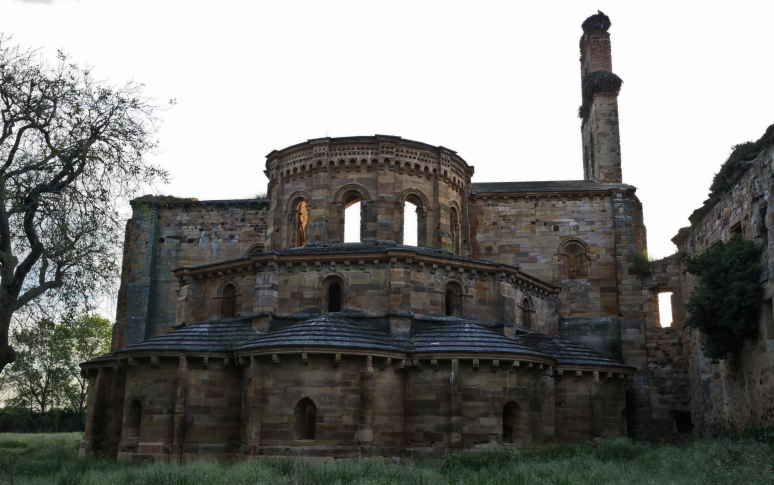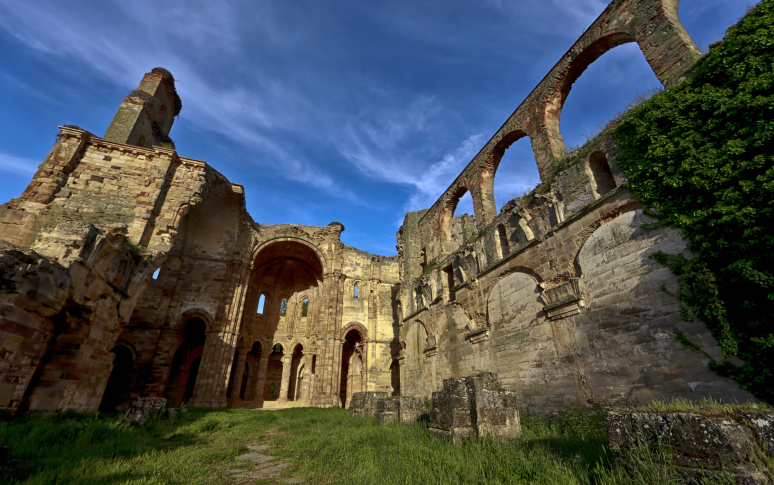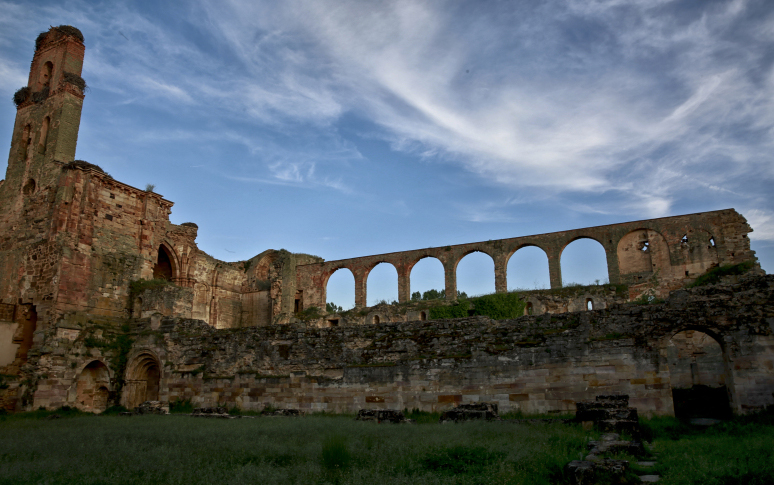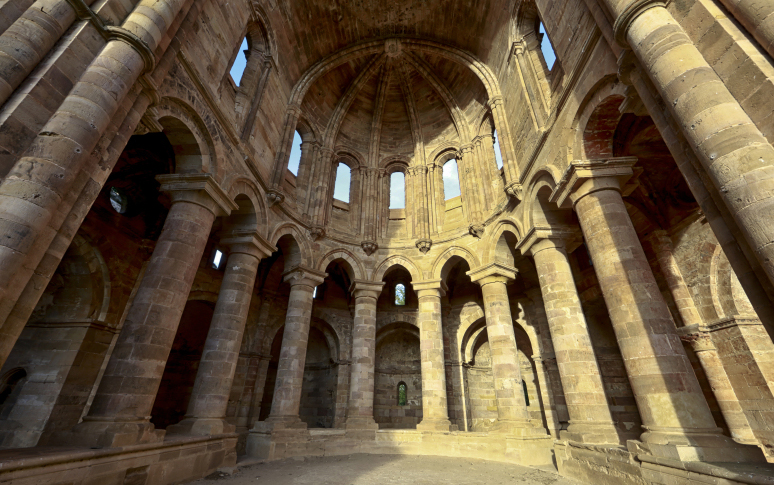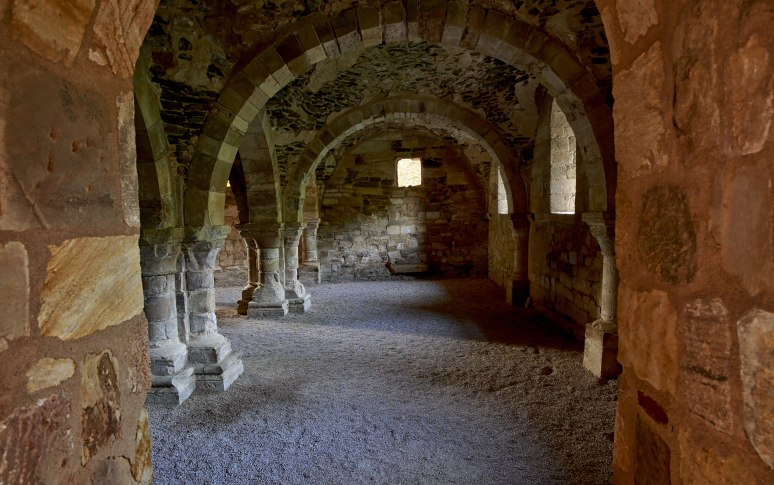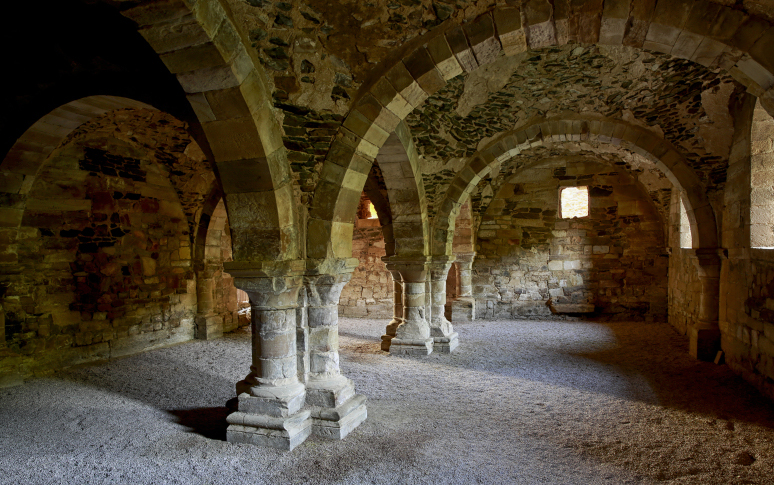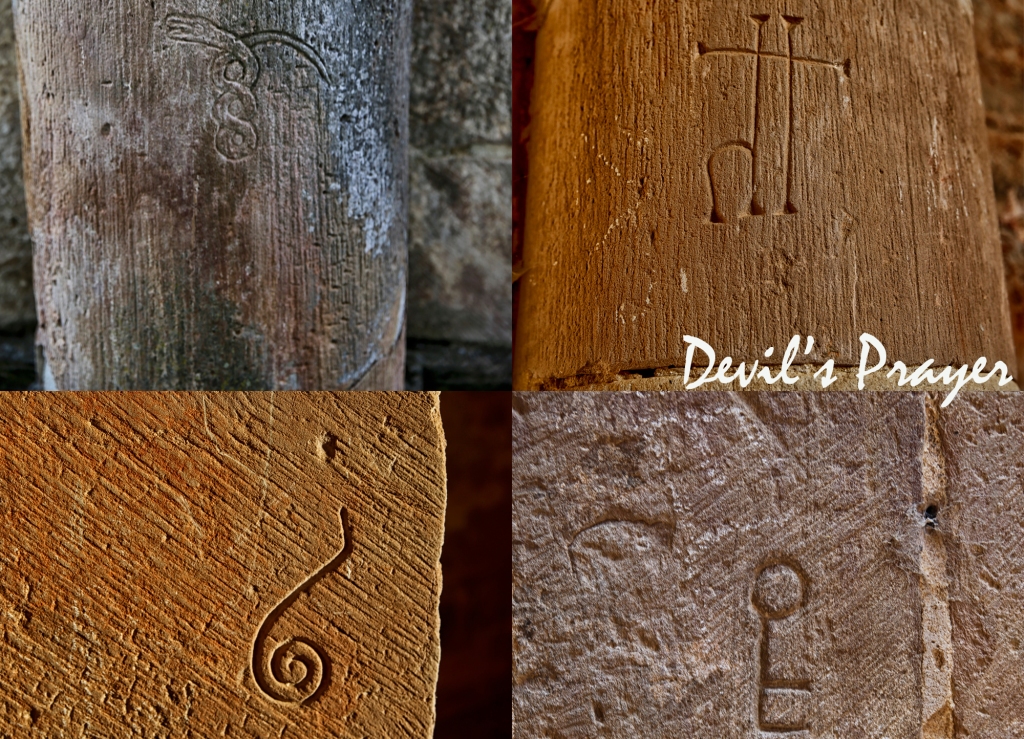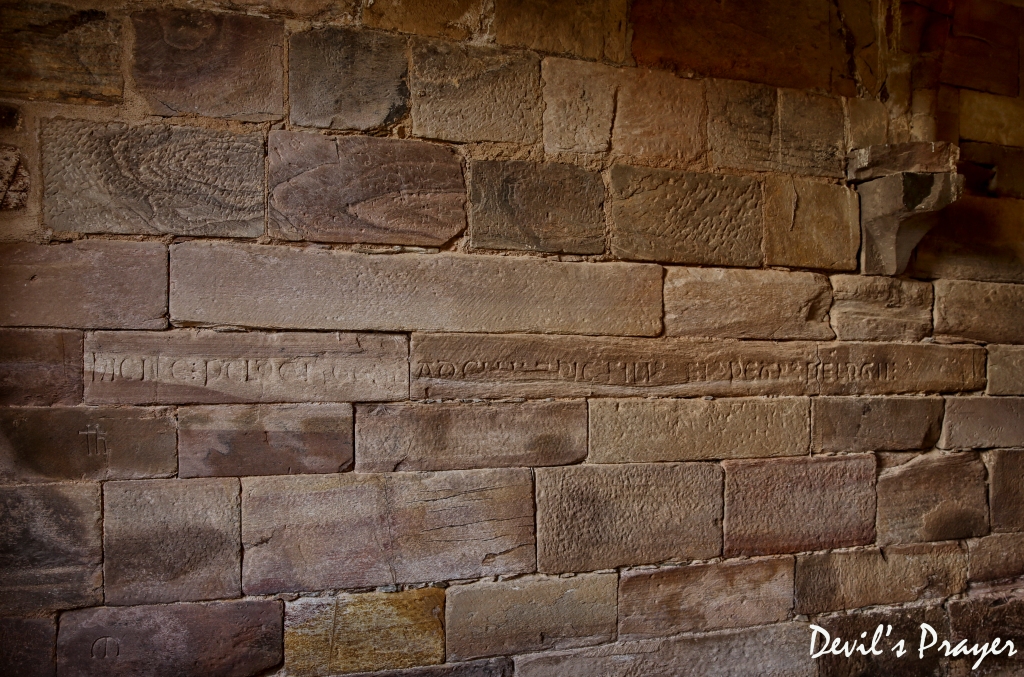Located around 35 kilometres north of the town of Zamora (insert link to Zamora page) close to the left bank of the Esla, a tributary of the Duero River are the ruins of the Monesterio de Santa Maria de Moreruela.
These are the remains of one of the first foundations Cistercian Order of the Iberian Peninsula. For a long time it was believed that the Monesterio de Santa Maria de Moreruela was the first Cistercian male establishment in the peninsula but studies today indicate there was a monastery previously set up on the right back of the Esla then called the Santiago de Moreruela. The monastery was moved to its current location around the year 1160 under a concession from Alfonso VII of Leon and the name was changed to the Santa Maria de Moreruela.
The romanseque gothic ruins remaining are those of a cathedral, 63 metres long and 26 metres wide between the ends of the transcept. Still standing is the skeleton of the main shrine with its arched semi- circular dome.
The monks living quarters are probably the best preserved areas located in the north east corner of the cloister and connected to the church.
The monks who lived on the site of the monastery were subject to the rules in San Benedict. Each monk has a mission to accomplish, cooks in the kitchen, work in the fields etc. The Moreruela Abbey expanded its holding to real estate and farms in the Villafáfila area as well as made claims on the established and lucrative salt works operating out of Lampreana near the Lagunas de Villafáfila. The monks also accessed wood from the neighbouring hills which conflicted with the cattle graziers of Villafáfila. Throughout its existence, the Moreruela Abbey lived in continuous conflict with its neighbours from Villafáfila. These conflicts have been recorded in the annals of the records held by the ancient church of Santa Maria del Morel in Villafáfila. ( insert link to Church)
End of the Monastery
One of the first events that changed the life of the community was the presence of Napoleon’s troops in 1808 during the War of Spanish Independence. This event brought the first confiscation of property. This scattered the monks into hiding into the nearby towns. At the end of the revolutionary war around 1813, the monks returned to the monastery to find the structures had deteriorated after the four and half years of neglect.
In October of 1820, the king signed the Reform Act and the second confiscation occurred. Monks lost both land and property near the monastery. Further in September 1835, the final confiscation took place and the monastery was officially closed.
The community at that time composed of about fifty monks, half of them established in the monastery and the rest commuting studying or attending parishes and priories. The monks were forced to leave the monastery and their property assets were confiscated and publicly auctioned. With the abandonment of the whole, the new owners began to exploit the monastery as a quarry for construction in the area, as can be seen in the church of the neighboring village of La Granja de Moreruela.
On the 3rd of July 1931, the remaining ruins of the Moreruela Abbey were declared a Historic Artistic Monument of national importance. However, the looting continued until 1981 when the Ministry of Culture began expropriations and restoration and protection of the remains of the Abbey were implemented.
Mason’s Marks
The church was built with large blocks of quartzite stone. Numerous mason’s leave a legacy behind with marks etched into the stones they cut.
Some etching’s describe ancient burial sites such as the one below:
And some have lost the meaning as the once proud scratches have faded into the sands of time.
A strange alquerque, (insert link to Alquerque page) an ancient board game was once reported to adorn the walls but it has since been lost. Other sculpts are unexplained like the one of a skull or the devil below.
A foundation stone in one of the apses of the head of the cathedral has the inscription MCC or the year 1200. It was the time when kings had given up the privileges of jurisdiction and the abbot became the absolute master, head of all justice, administration and taxes in the domain. It was also in the year 1200, when Arnaud Amalric (insert link to Amalric’s page) was crowned abbot of Citeaux and the Supreme Head of the entire Cistercian Order.
Recent investigations have revealed tunnels and chambers located under and in the vicinity of the Moreruela Abbey. Further archaeological investigations are proposed.
